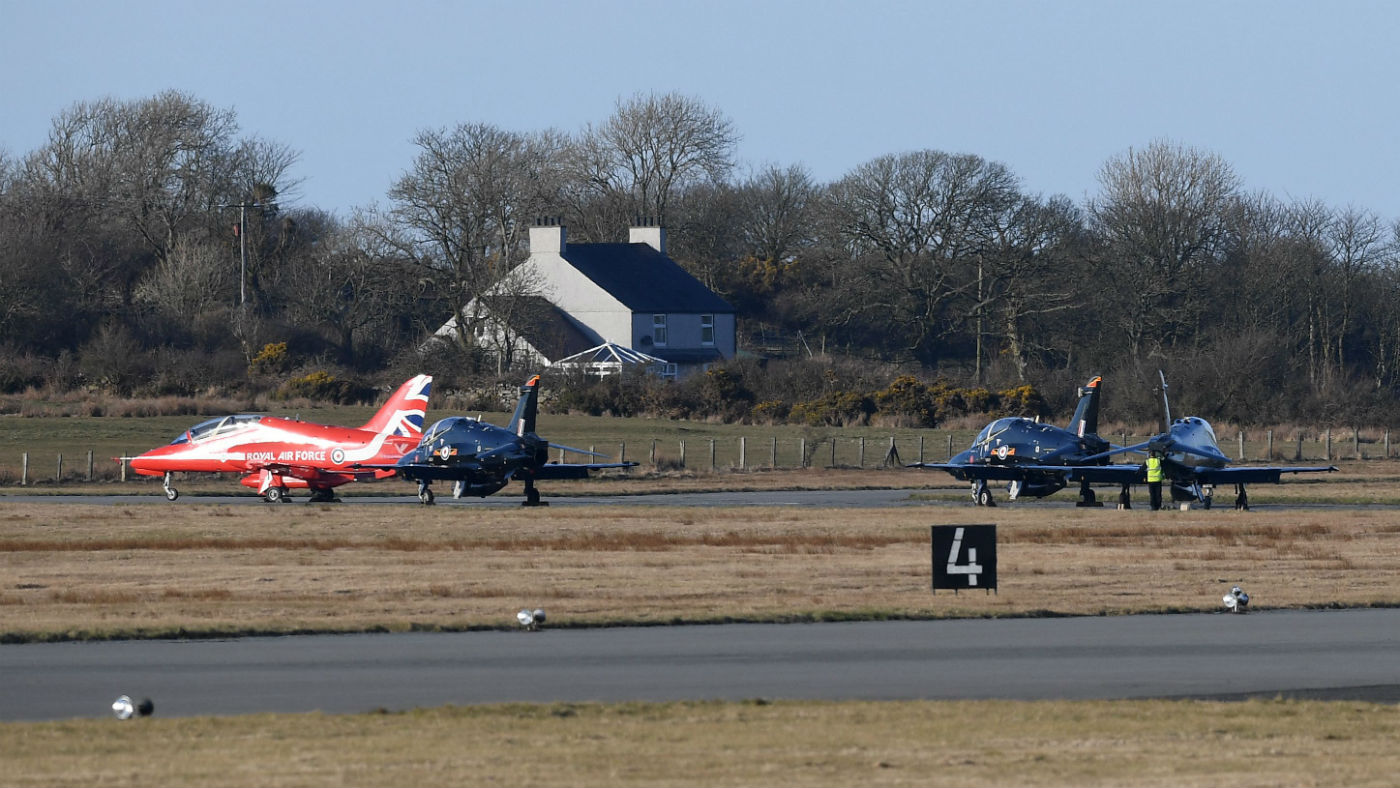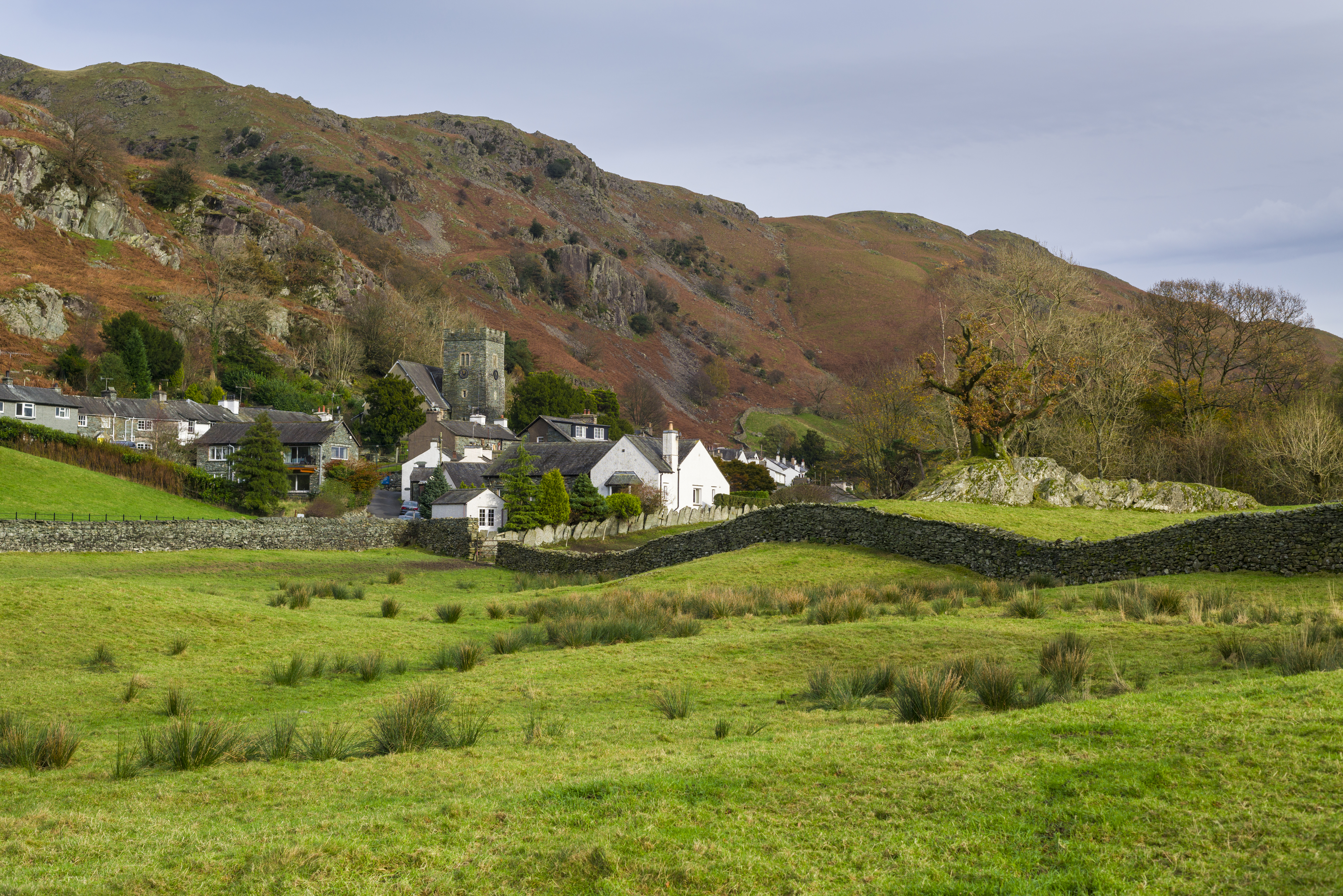Red Arrows crash: officials investigate fatal accident
RAF engineer killed and pilot injured after Hawk jet crashes on Anglesey

An investigation has been launched after a Red Arrows jet crashed yesterday afternoon, killing an RAF engineer and injuring the pilot.
The Hawk jet, used by the aerobatic display team, crashed at RAF Valley on the island of Anglesey, in North Wales. The 35-year-old pilot, David Stark, managed to eject from the aircraft “just seconds before it plunged into the ground in a ‘big fireball’”, says the London Evening Standard.
Experts are carrying out a joint investigation, led by the Air Accident Investigation Branch, to discover the cause of the crash, the BBC reports.
The Week
Escape your echo chamber. Get the facts behind the news, plus analysis from multiple perspectives.

Sign up for The Week's Free Newsletters
From our morning news briefing to a weekly Good News Newsletter, get the best of The Week delivered directly to your inbox.
From our morning news briefing to a weekly Good News Newsletter, get the best of The Week delivered directly to your inbox.
The jet was on a routine flight from RAF Valley to the Red Arrows’ base at RAF Scampton, in Lincolnshire, when it crashed.
Group Captain Nick Tucker-Lowe last night released a statement saying the pilot was receiving medical care. Tucker-Lowe did not disclose the pilot’s condition or the name of the Red Arrows engineer killed in the “tragic accident”, but said their families had been informed.
Air Chief Marshal Sir Stephen Hillier, head of the RAF, said the crash was a “reminder that we must never take for granted the risks our people take in the service of our country”.
“My deepest thoughts are with the friends and family of those involved at this terrible time,” he added.
A free daily email with the biggest news stories of the day – and the best features from TheWeek.com
Theresa May also sent her condolences to the family of the RAF engineer. “My thoughts are also with the pilot and with the Red Arrows following this tragic incident,” the Prime Minister said.
-
 Campus security is in the public eye again after the Brown shooting
Campus security is in the public eye again after the Brown shootingTalking Points Questions surround a federal law called the Clery Act
-
 9 new cookbooks begging to be put to good winter use
9 new cookbooks begging to be put to good winter usethe week recommends Booze-free drinks, the magic versatility of breadcrumbs and Japanese one-pot cooking
-
 Bari Weiss’ ‘60 Minutes’ scandal is about more than one report
Bari Weiss’ ‘60 Minutes’ scandal is about more than one reportIN THE SPOTLIGHT By blocking an approved segment on a controversial prison holding US deportees in El Salvador, the editor-in-chief of CBS News has become the main story
-
 Home Office worker accused of spiking mistress’s drink with abortion drug
Home Office worker accused of spiking mistress’s drink with abortion drugSpeed Read Darren Burke had failed to convince his girlfriend to terminate pregnancy
-
 In hock to Moscow: exploring Germany’s woeful energy policy
In hock to Moscow: exploring Germany’s woeful energy policySpeed Read Don’t expect Berlin to wean itself off Russian gas any time soon
-
 Were Covid restrictions dropped too soon?
Were Covid restrictions dropped too soon?Speed Read ‘Living with Covid’ is already proving problematic – just look at the travel chaos this week
-
 Inclusive Britain: a new strategy for tackling racism in the UK
Inclusive Britain: a new strategy for tackling racism in the UKSpeed Read Government has revealed action plan setting out 74 steps that ministers will take
-
 Sandy Hook families vs. Remington: a small victory over the gunmakers
Sandy Hook families vs. Remington: a small victory over the gunmakersSpeed Read Last week the families settled a lawsuit for $73m against the manufacturer
-
 Farmers vs. walkers: the battle over ‘Britain’s green and pleasant land’
Farmers vs. walkers: the battle over ‘Britain’s green and pleasant land’Speed Read Updated Countryside Code tells farmers: ‘be nice, say hello, share the space’
-
 Motherhood: why are we putting it off?
Motherhood: why are we putting it off?Speed Read Stats show around 50% of women in England and Wales now don’t have children by 30
-
 Anti-Semitism in America: a case of double standards?
Anti-Semitism in America: a case of double standards?Speed Read Officials were strikingly reluctant to link Texas synagogue attack to anti-Semitism